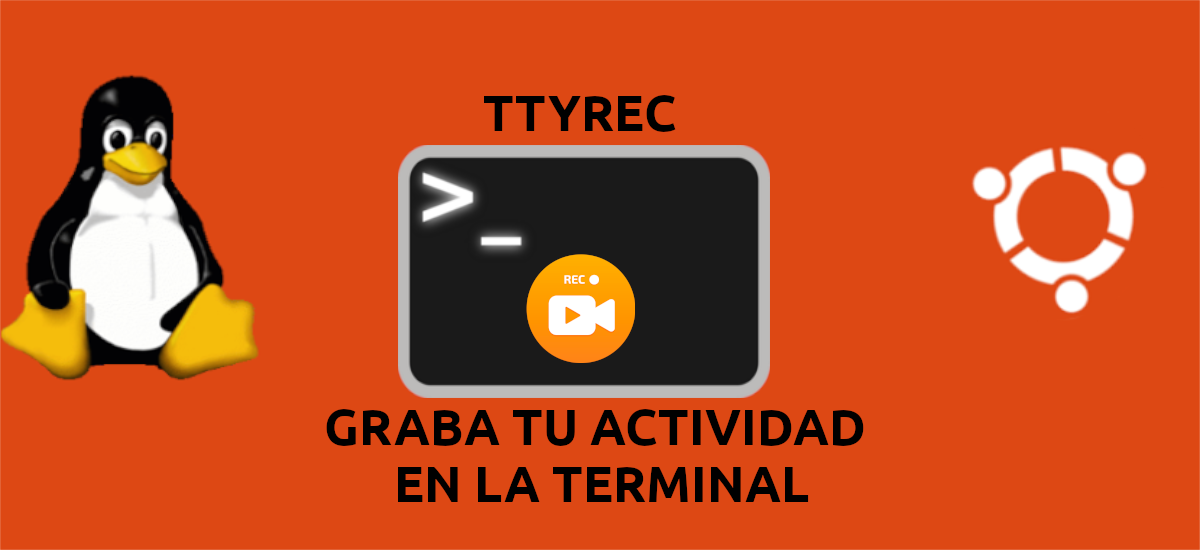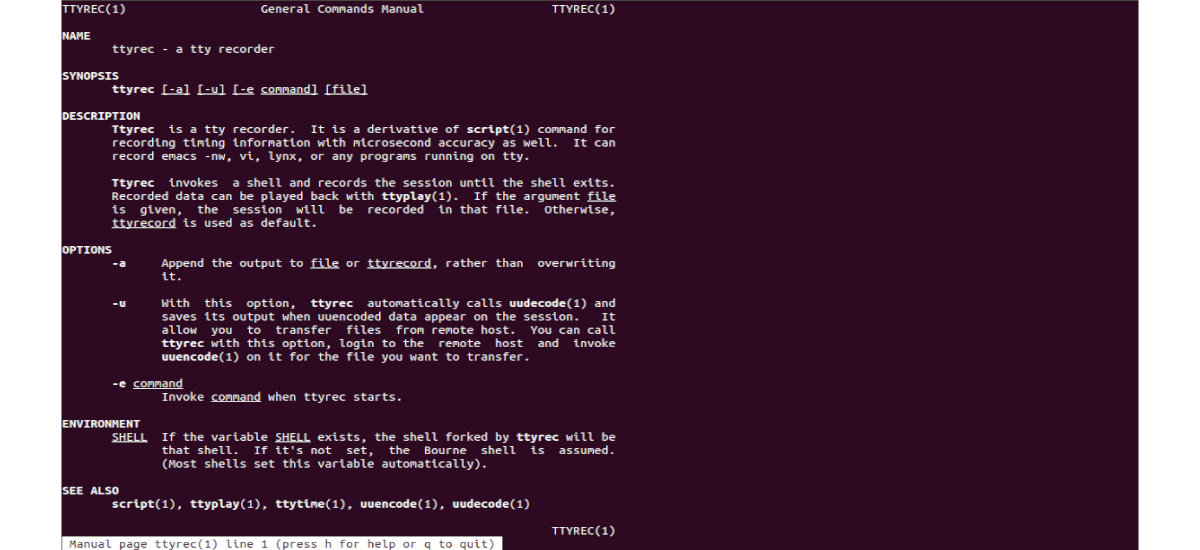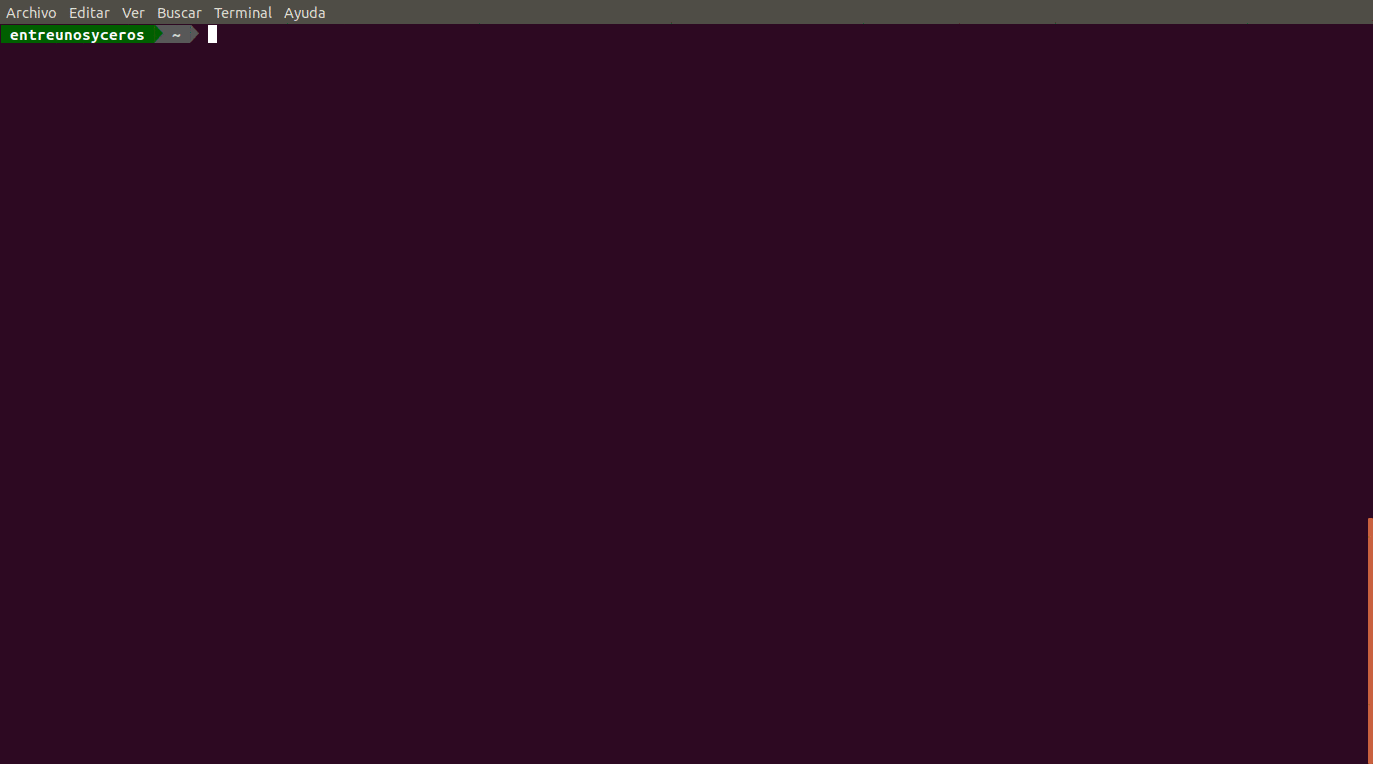
In the next article we are going to take a look at ttyrec. This is a program that has been around for a few years, but is still capable of record the TTY output of a program in text mode along with timestamps and then play it back. This program is similar to the script command, but it also allows you to pause, slow down or speed up playback.
With ttrec we can record all the commands that we write at the terminal prompt and store them in a file. Then allows to play them with the ttyplay command. In addition we can also convert recording to animated gif with ttygif. Ttrec is a fork of the script command to record timing information with microsecond precision.
General characteristics of ttyrec
Some of the features it includes are:
- ttyrec requires fewer parameters for recording and playback than other options to save the terminal.
- Records in a single file.
- You can record emacs -nw, vi, lynx or any program that runs on tty.
- The output file contains timestamp information in addition to the terminal data.
- We will be able overwrite or add content to the generated file.
- Call automatically uudecode.
- Speed up / slow down reproductions.
- Allows browse a ttyrecord recording in real time.
- We can measure the time of recorded data.
Install ttyrec
The ttyrec program is not included by default in all Gnu / Linux distributions. To install it you just have to use apt. To install it, in a terminal (Ctrl + Alt + T) we will have to execute:
sudo apt install ttyrec
Its use is quite simple, even more than the Script command. To execute it you will have to call the program specifying the name of the output file. The format to use would be something like the following:
ttyrec < ArchivodeLog >
How to use ttyrec
The following example shows ttyrec recording the session in a file called ttylog:
ttyrec -a ttylog
It can stop recording terminal activity pressing the key combination Ctrl + D. We can also write exit.
To use this command we will have available some options such as:
- -a →Add the output to the file or ttyrecord, instead of overwriting it.
- -u → With this option ttyrec automatically calls uudecode and saves its output when the encoded data appears in the session. Will allow us transfer files from remote host.
- -e command → Invoke a command when ttyrec starts.
For more information about this program, you can visit the project website o consult the man page typing in terminal (Ctrl + Alt + T):
man ttyrec
Recorded data can be played back with the ttyplay command that is included. To play the recorded activity, you need use the ttyplay command followed by the name of the log file:
ttyplay < ArchivodeLog >
Convert recording to GIF
We will be able use TTYGIF to convert the recording to GIF. This program has the project uploaded to GitHub with instructions on its installation and use.
sudo apt install imagemagick ttyrec gcc x11-apps git clone https://github.com/icholy/ttygif.git cd ttygif make sudo make install
Creating a gif is very simple. First we started recording with:
ttyrec ejemplo
Once we are done, we can use the combination Ctrl + D In the terminal. We can also do it with the order exit, with the disadvantage that that last command will be recorded in the generated GIF.
Now for convert to gif format all you have to do is use a command like the following:
ttygif ejemplo
And we already have it. Our gif will have been saved in the file tty.gif. If we get an error like: Error: WINDOWID environment variable was empty, it will be necessary to configure WINDOWID manually. This can be done by typing in the terminal (Ctrl + Alt + T):
sudo apt-get install xdotool export WINDOWID=$(xdotool getwindowfocus)
After writing the previous commands, we can now launch the ttygif command again to start creating the gif. Creating this file may take a while.
uninstall
To remove ttyrec from your computer, you just have to open a terminal (Ctrl + Alt + T) and write the following command:
sudo apt remove ttyrec
Programs like this are a good choice for terminal session recordings. These types of programs are a good option to share knowledge or tutorials. The ttyrec command, although it is not installed by default, is a good option for users who are not used to running a lot of commands in the terminal. This is one more of the many possibilities that exist today to record and reproduce the activity of the terminal.




